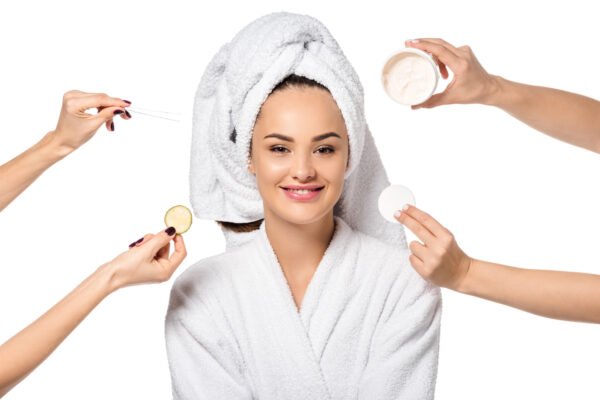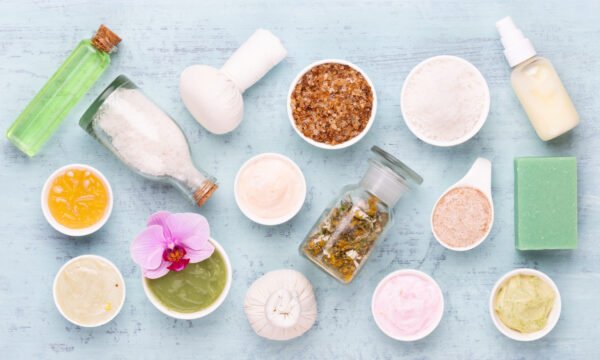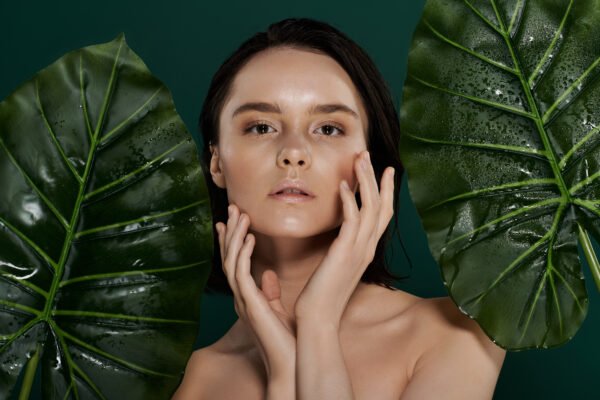Introduction
We experience the world’s climates and landscapes as courageous explorers, nature enthusiasts, and tourists. Every vacation has skin difficulties since tropical paradises are hot and winter wonderlands are freezing. Your skincare routine should match the weather to maintain your skin healthy, bright, and protected. This blog article covers primary skin care for travellers in various climates. Expert guidance, product ideas, and activities will help individuals adapt to climate change.
Understanding Your Skin
Before delving into the specifics of climate-appropriate hygiene, it is critical to identify the type and requirements of your skin. Each individual’s epidermis is distinct, possessing particular oil production levels, sensitivities, and hydration requirements. The following are several crucial factors to contemplate:
Skin Type:
Determine your skin type before anything else: is it a combination, dry, oily, or sensitive? This is a crucial consideration when selecting the appropriate hygiene products.
Sensitivity Level:
Could you determine the sensitivity level of your epidermis? Redness or irritation propensity may necessitate the use of milder products.
Climate Impact:
Comprehend the effects that various climates have on the epidermis. For example, arid, frigid environments may induce cutaneous constriction and worsen dryness, whereas heated, humid conditions may stimulate sebum secretion and contribute to acne.
Hydration Needs:
It is essential to maintain adequate hydration for all skin types, irrespective of the climate. It is necessary to include a hydrating component in every hygiene regimen.
Remember that maintaining regulated and comfortable skin is paramount, even when traversing significantly divergent climates.
Winter Wonderland: Skincare for Cold Climates
A winter landscape can be awe-inspiring, but the frigid, arid air can tax the epidermis. Deficient humidity levels dehydrate the skin, causing it to become parched, taut, and flaky. Counteract these effects by applying multiple layers of skincare, analogous to how one would adjust their attire.
Cleanser:
Choose a gentle, hydrating, and effective cleanser without depleting the skin of its natural oils.
Serum:
Hyaluronic acid-containing serums have the potential to revolutionize the skin care industry by attracting moisture from the surroundings.
Moisturizer:
A thick, oil-based moisturizer can form a protective layer on the skin, retaining more hydration than a conventional cream or lotion.
Sunscreen:
Yes, UV rays can cause skin injury even on cloudy days and cold climates. Apply liberally a broad-spectrum sunscreen containing a minimum SPF of 30.
Lip Balm:
Remember your lips! When it’s cold outside, they can get dry and crack very quickly. Using a lip balm that moisturizes often can help keep your lips soft and smooth.
Remember to give your skin time to change when moving from one climate to another. If you are patient and change your routine as needed, you can keep your skin healthy and beautiful no matter where your adventures take you.
Sizzling Summers: Protecting Your Skin in Hot Climates
It may feel like paradise to lay in the sun in a warm place, but the heat, humidity, and intense UV rays can be brutal on your skin. In hot spots, here’s how to keep your face healthy and safe:
Cleanser:
You can pick a mild wash that doesn’t foam the skin. It will get rid of sweat and oil without drying it out.
Toner:
A good toner that doesn’t contain alcohol can help regulate your skin’s pH levels and prevent excess oil production.
Serum:
To protect your face from UV rays and environmental pollutants, look for a light serum full of antioxidants.
Moisturizer:
Choose an oil-free, light lotion to moisten your skin without feeling heavy or greasy. Some creams have SPF added to protect you even more from the sun.
Sunscreen:
No matter the weather, you should always take this step. Put on a broad-spectrum sunscreen with at least SPF 30 every two hours immediately after swimming or sweating a lot.
After-Sun Care:
After being in the sun, use a cooling aloe vera gel or an after-sun product to soothe your face. This will help keep your tan going longer.
Lip Protection:
Sun damage can also happen to your lips, so use a lip balm with SPF.
It would be best to do more than shield your face and clothes from the sun in hot places. Also, drink plenty of water, stay out of the sun when it’s at its strongest, and always wear protective clothes. Your skin will thank you if you take charge of your skincare practice.
Tropical Paradises: Balancing Skincare in Humid Environments
When you move to a lush and humid place, your skin will be exposed to very different conditions. The air is very wet, making your skin feel oily and causing pores to get plugged and acne to appear. Don’t worry—if you follow the proper skincare tips for travellers, you can enjoy the tropics without hurting your skin:
Cleanser:
A mild cleanser based on water will help remove the sweat and oil without drying your face.
Toner:
Toner will not only keep your skin feeling fresh but also keep your skin’s pH levels in check. Toners with witch hazel or tea tree oil can help prevent your skin from making too much oil.
Serum:
Choose a hydrating serum without oil. Hyaluronic acid and vitamin C are two ingredients that can help keep your face shiny and hydrated even when it’s humid outside.
Moisturizer:
Using a moisturizer when it’s humid outside might not seem sensible, but a light, non-comedogenic moisturizer can help keep your skin healthy and prevent it from producing too much oil.
Sunscreen:
Even in jungles with clouds over them, UV rays can get through and hurt skin. A broad-spectrum sunscreen with at least 30 SPF is best. Choose a product that won’t wash off if you’re swimming or sweating.
Blotting Papers:
These thin sheets are great for touch-ups on the go because they soak up oil and shine without obstructing your skincare or makeup.
Lip Balm:
To keep your lips hydrated, choose a lip balm with fortifying ingredients; if you’ll spend time outdoors, look for one with SPF.
Keep in mind that in a humid environment, less is more. Excessive use of heavy products on the skin can result in clogged pores and blemishes. Use breathable, lightweight formulations, and always protect your epidermis from the sun.
Transition Seasons: Adapting Your Routine in Between
Transitional seasons, including autumn and spring, are characterized by variable weather conditions that present cosmetics with distinct challenges. Adjusting your routine to account for fluctuating humidity and temperature is crucial:
Cleanser:
Select a pH-balanced, effective, gentle cleanser to eliminate environmental pollutants without causing skin dehydration.
Toner:
An alcohol-free, hydrating toner can also reset the skin’s pH equilibrium and provide an additional layer of moisture.
Serum:
Antioxidant-containing serums, such as those containing vitamin C, can protect the skin from environmental stressors during the transitional seasons. Hyaluronic acid-containing serums can efficiently retain moisture.
Moisturizer:
Consider using a moisturizer of medium weight, which is neither too light nor too hefty. This hydrates the epidermis without placing an excessive burden on it.
Sunscreen:
Always apply a broad-spectrum sunscreen with a minimum SPF of 30—regardless of the season.
Exfoliant:
As the season changes, weekly exfoliation can help remove dead skin cells and promote skin renewal.
Lip Balm:
Using a nourishing lip salve to maintain hydrated lips will prevent chapped lips every day during the transition between seasons.
Bear in mind that transitional seasons demand a flexible approach to hygiene. Adapt your product selection to your skin’s requirements to maintain health and radiance.
Product Recommendations
The following are exemplary hygiene products that are climate-adaptable and can assist in maintaining the health and radiance of your skin:
Cleanser:
CeraVe Hydrating Facial Cleanser is a gentle, non-foaming formulation that maintains the skin’s moisture balance.
Toner:
The astringent properties of the Thayers Alcohol-Free Rose Petal Witch Hazel Facial Toner make it an excellent product for regulating sebum production.
Serum:
A potent antioxidant, The Ordinary Vitamin C Suspension 23% + HA Spheres 2%, safeguards the epidermis against environmental pollutants and UV rays.
Moisturizer:
Neutrogena Oil-Free Moisture SPF15 is a light, non-greasy moisturizer with enhanced sun protection.
Sunscreen:
The broad-spectrum Anthelios Melt-in Milk Sunscreen SPF 60 by La Roche-Posay provides exceptional UV protection.
After-Sun Care:
Australian Gold Aloe Vera Freeze Spray Gel is a cooling after-sun product that hydrates and soothes the epidermis.
Lip Protection:
SPF 15 Burt’s Bees 100% Natural Moisturizing Lip Balm safeguards and hydrates the lips.
Exfoliant:
Paula’s Selection SKIN PERFECTING 2% BHA Liquid Exfoliant improves skin texture and removes dead skin cells.
Remember that the most effective treatment for you will depend on your skin type and the climate in which you reside. Before using a new product, you should always perform a patch test to ensure it will not irritate your skin.
Global Glow Tips from Experts
Skincare specialists from around the world have contributed their most effective Skincare Tips for Travelers to preserve a flawless complexion in any climate:
Stay Hydrated:
From both an internal and external standpoint. Utilize hydrating products and consume copious amounts of water as part of your hygiene regimen. Rehydration is vital for the well-being of the skin.
Prioritize Sun Protection:
Weather or location is not an issue; UV protection is necessary. You can use protective clothing and sunscreen and seek shade whenever possible.
Maintain a Balanced Diet:
The origin of a healthy epidermis is within. A diet abundant in fruits, vegetables, whole grains, and lean protein can contribute to radiant complexion.
Consider Your Climate:
Your hygiene regimen should be modified by the local climate. Whether you are in a transitional, humid, or dry environment, your epidermis has distinct requirements.
Don’t Forget Your Lips and Eyes:
These regions are particularly susceptible to environmental conditions. You can use products formulated specifically for hydrating and protecting these areas.
Bear in mind that every individual’s epidermis is distinct. What works for one individual may not work for another. Constantly monitor your skin’s condition and modify your hygiene regimen as necessary.
Conclusion
Finally, any setting may support healthy, bright skin. Climate and season-related skin changes must be understood. A routine that includes cleaning, toning, moisturizing, and sun protection is essential. Drinking, eating, and sleeping well improves skin from the inside out. Remember that cleanliness varies. Always try new products on your skin and adjust your routine. These Traveller Skincare Tips may give you bright skin wherever.









